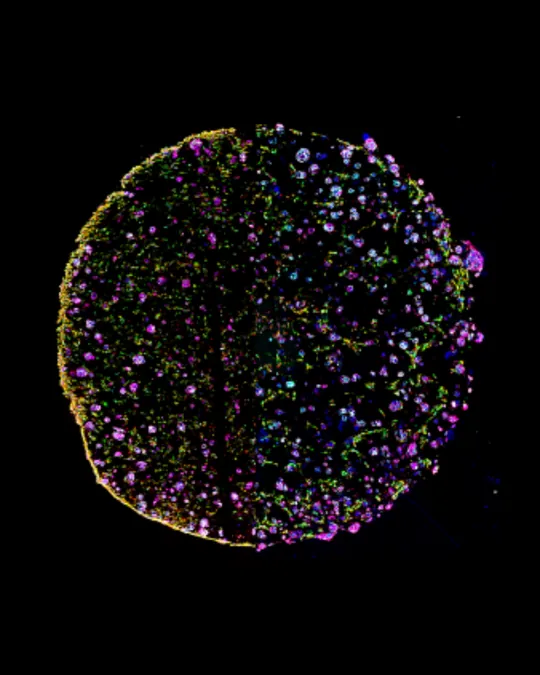
Breakthrough Discovery: The ‘Colocatome’ Reveals Non-Cancerous Cells’ Hidden Influence on Tumors!
2025-03-10
Author: Siti
Breakthrough Discovery: The ‘Colocatome’ Reveals Non-Cancerous Cells’ Hidden Influence on Tumors!
In an astonishing leap forward in cancer research, scientists have unveiled a groundbreaking concept known as the ‘colocatome’—a detailed catalog that documents the complex interactions of non-cancerous cells with cancerous ones. For years, focus has primarily been on cancer cells themselves, but this new study highlights the significant role played by surrounding healthy cells, unveiling the layers of tumor behavior in unprecedented ways.
Dr. Sylvia Plevritis, chair of the Department of Biomedical Data Science at Stanford Medicine, spearheads this innovative research, emphasizing that 'not all cells within a tumor are malignant; in fact, non-cancerous cells can often dictate how a tumor develops.' This statement underscores the often-overlooked reality that these adjacent non-cancerous cells can significantly impact a tumor's progression and treatment response.
The colocatome provides a comprehensive snapshot of a tumor's cellular environment, classifying various cell types and their quantities in proximity to cancer cells. The research aims to answer crucial questions about cell relationships—understanding which cells are friendly neighbors and which ones engage in repulsion. Cells that coexist harmoniously are said to 'colocalize,' whereas those that do not are described as forming 'anti-colocalizations.' These insights are critical as they are directly linked to the state of cancer—ranging from aggressive to drug-resistant.
Researchers reveal that cancer cells are highly influenced by their surrounding cellular landscape. The behavior of these malignant cells can fluctuate depending on the types and amounts of neighboring non-cancerous cells. For instance, when lung cancer cells were treated with an anti-tumor drug, they typically would perish; however, the presence of fibroblasts radically altered the scenario. Plevritis noted that even after treatment, both cancer cells and fibroblasts remained, but they displayed a new spatial organization, leading to potential drug resistance. 'It’s akin to rearranging furniture in a room and discovering all exits are blocked,' she explained.
Looking ahead, the research team is keen to build a richer database of these spatial maps, which they believe will illuminate why certain cancers withstand treatment while others do not. They propose that the colocatome could guide clinicians in selecting more effective therapies based on specific cell interactions within a tumor. If a particular arrangement of cells confers resistance to a drug, understanding this could lead physicians to alternative treatments.
What’s even more exciting is the potential incorporation of artificial intelligence into this research. As they accumulate more extensive datasets, the team plans to use AI to identify unique spatial patterns, aiming to categorize tumors by shared spatial motifs across different cancer types. Dr. Plevritis expresses her excitement over this possibility, stating, 'Unraveling these universal patterns might reveal fundamental rules governing tumor behavior and pave the way for more effective cancer therapies.'
With contributions from researchers as prestigious as those at the University of Oxford and backing from the National Institutes of Health, this study stands to reshape our understanding of cancer biology and patient treatment strategies. As more discoveries unfold, the colocatome could become a crucial tool in the fight against cancer, offering hope for more personalized and effective treatment protocols in the future.
Stay tuned for more updates on this revolutionary research as it promises to change the landscape of cancer treatment forever!

 Brasil (PT)
Brasil (PT)
 Canada (EN)
Canada (EN)
 Chile (ES)
Chile (ES)
 Česko (CS)
Česko (CS)
 대한민국 (KO)
대한민국 (KO)
 España (ES)
España (ES)
 France (FR)
France (FR)
 Hong Kong (EN)
Hong Kong (EN)
 Italia (IT)
Italia (IT)
 日本 (JA)
日本 (JA)
 Magyarország (HU)
Magyarország (HU)
 Norge (NO)
Norge (NO)
 Polska (PL)
Polska (PL)
 Schweiz (DE)
Schweiz (DE)
 Singapore (EN)
Singapore (EN)
 Sverige (SV)
Sverige (SV)
 Suomi (FI)
Suomi (FI)
 Türkiye (TR)
Türkiye (TR)
 الإمارات العربية المتحدة (AR)
الإمارات العربية المتحدة (AR)